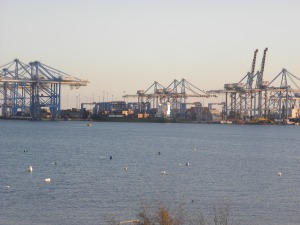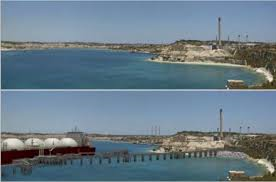Land use planning should, and can, be developed into an effective tool to combat the impacts of climate change. This can be done by effectively encouraging development which contributes to reducing climate change impacts.
Apparently, it is too much to expect from our authority responsible for land use planning.
The development of large commercial centres may make economic sense, but do they make environmental and social sense?
This is what sustainable development is all about: that economic development must continuously factor in environment impacts as well as social considerations. The term sustainable development is on everyone’s lips, but it is definitely and continuously ignored when push comes to shove. When decisions are taken, unfortunately it is the euros which take a priority over sustainability.
It is not just about the actual land to be developed, or the buildings to be redeveloped. Much more has to be taken into consideration in each and every decision taken.
Consider for example the Lidl network or another multiple supermarket competitor chain currently planning an alternative network in Malta. Their impacts are multiple. There is definitely an impact on the existing commercial community which can be gauged by a retail impact assessment. There are however also widespread social and environmental impacts which are generally minimised or ignored by all the decision takers.
The social impact definitely needs a meticulous assessment. The changing nature of our residential neighbourhoods through the squeezing out of the small outlets, both commercial and artisanal, and consequently forcing all residents to look far beyond the community and its neighbourhoods for their needs, at times even their basic daily needs, is a major impact. This has and is still transforming our localities and consequently our communities such that at times you need to travel from one locality to another to satisfy your basic needs. This is not a positive development, yet it has been continuously ignored.
A direct impact of all this is that the expense to satisfy our needs is now increased to include the environmental impact of travel with the consequential contribution to climate change. Expenses are not only those which are paid in euro. These specific expenses are a charge debited to our ecological account.
Sustainable land use planning can put an end to all this. Unfortunately, it is not, as climate change impact has not been embedded as an essential element to be addressed by local land use planning!
Current land use planning practice needs to be turned on its head in order to prioritise community needs and impacts on the ecology over the requirements of the economy.
This is what the 15-minute city concept is all about! In reality it is nothing new as it signifies having our basic necessities close by, as in times gone by, when our localities were smaller and alive with vibrant communities. Small is beautiful we were told some years back by Erst Schumacher. The full title of his opus is more revealing: “Small is Beautiful. Economics as if people mattered.” People should be the focus of all our activity. Unfortunately, this is not the case.
I still vividly remember the phrase “planning is for people” in one of the André Zammit’s first urban planning lectures I attended at university. It was a phrase lifted from the UK Skeffington report drawn up in 1969 and examining the participation of the public in land use planning!
Where are the people and their needs in our land use planning? Following the various land use planning cases as they develop, it is clear that as practised locally, land use planning is more a compendium of rights relative to property development than a process regulating the use of land for the ultimate benefit of the whole community. Planning is for people, not for profit!
Land use planning: as if people really mattered!
published in The Malta Independent on Sunday 8 May 2022




